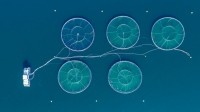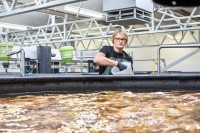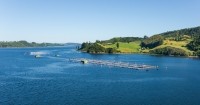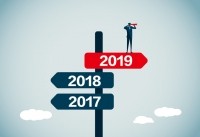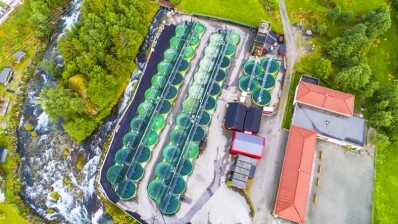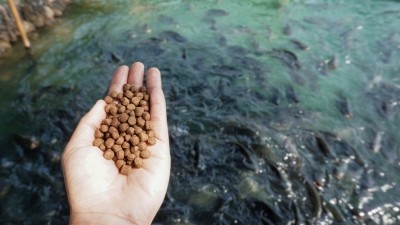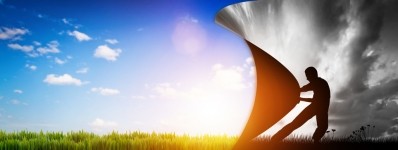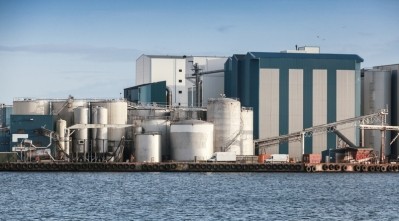Interviewing Mr Aquaculture: Tracking a career in the fish feed business
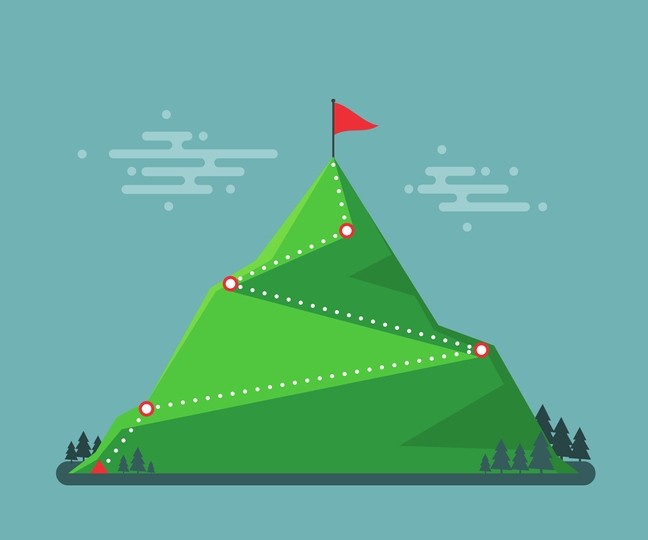
Nicknamed ‘Mr Aquaculture’ by his colleagues, Alsted worked in BioMar for 32 years, where he held various positions from R&D, to sourcing to food safety and business relations. He was also part of the executive management team and contributed to opening new markets like Chile and China.
Early days
In terms of why he was attracted to fish farming in the first place, Alsted told us:
“I really liked the idea of working outdoors, [I was interested in aspects such as] the fish growth cycle, from eggs to hatchery and [onwards].”
After three years working at a trout farm in Denmark, he then went the academic route:
“At that time in Denmark, in 1977, fish farming was quite profitable, and I couldn’t afford to buy a farm, that [goal] was completely out of my reach. Therefore, I started to look at alternatives, to see where I could get education in this area. I looked at Canada, France and finally Norway [in terms of pursuing study].
“The [University of Tromsoe in Norway] required 18 months of fishery related work experience to get into the course. Back, then, in 1977, there was little focus on aquaculture in Norway, and my aquaculture background was not considered relevant - people were not convinced it was going to work as an industry. I ended up having to get a dispensation to get into that course. It is funny to see how things have developed since, when you see how valuable aquaculture is today in Norway, a big turnaround.”
When he qualified in 1982, he went back to Denmark, and worked in an institute under the auspices of the Danish ministry of fisheries for a few years, where he managed a new department, evaluating fishmeal quality parameters.
“That was very valuable for me. We had a pilot scale production facility at the institute, and we looked at how processing affected fishmeal quality. At the same time I was also an associate professor at Aalborg University, teaching students about fish.”
He has seen the whole arc of manufactured fish feed development in his time in the industry:
“When I started in aquaculture in 1974, we fed the fish with raw fish. When I left [Denmark] in 1977 for Norway the first attempts at producing pellets were being done. We had a period where we were using moist pellets, but that was disaster as people could not handle it from a microbiology point of view. Very soon they went on to use pelletized feed, and then, extrusion started to be common, a [method] that began to dominate in the 1990s, and [of course] is the same process we have today.”
He has also been witness to progress in fish farming production methods since the late 1970s. He noted the onset of recirculation systems, beginning in the late 1980s and early 1990s, with eel production.
“You need to keep the temperature high [for eel production]. You need 25 degrees Celsius plus to grow eels. You could not just pour that water away with all that energy in it. You needed to recirculate it, and that is how that system started. [Recirculation] was used with other species much later on but for many years it was only used with eels.”
Environmental awareness
As regulatory pressure on the industry increased over water usage and the discharge of nutrients, in Denmark in particular, some of the bigger companies involved in the sector realized they had to do something, he said.
“The first thing we did [in this regard] was to look at the feed. When I was first employed [at BioMar in 1987], I was doing a commercial PhD, Environmental Feed for Fish, and that lasted for two and half years. During that period, we tried to reduce the environmental impact [of farming] by decreasing the phosphorus and nitrogen discharge from farms, by designing the feed in a way to lower such discharges. The way to do that was to use better raw materials, with higher digestibility, and more precise combinations of amino acids. That is when the focus on digestibility really started.
“At that time, the pellet [contained] really only fishmeal, fish oil, wheat and vitamins. The fishmeal [inclusion level] was around 40% and that was providing far too a high phosphorus level [in the formulation]. Therefore, we selected fishmeal with low phosphorus and high digestibility. All of that cost money, but the point was we could improve the FCR, so we were using less feed to produce the same amount of fish, the fish grew better because they were eating more, that meant the farmers also made more money, we made more money, and there were fewer nutrients being discharged into the environment.”
That feed development approach, started in 1987, has been fundamental to BioMar, giving it a leading position in the market in Denmark and then allowing it to expand to other markets, globally, he said.
Chinese market
Alsted championed such an environmentally aware fish feed development model in China. Having spent eight years prior travelling back and forth to the Asian behemoth, he moved there for a year in 2016.
BioMar currently operates a joint venture in China with local company, Tongwei Group. Its existing fish feed production facility in China, under that JV, is located at Haiwei, near Hong Kong, and a new facility is currently being built in Wuxi just outside Shanghai.
The majority of aquaculture operations in China are in freshwater or in brackish freshwater but the availability and quality of the water there has been impacted by both natural and anthropogenic activities, leading to poor water quality and reduced productivity in aquatic ecosystems.
“They have to do it in a smarter way.”
BioMar, he said, is trying to support such an approach.
“There are Chinese companies that understand this, but the farmers need to understand this and legislation has to support it.
“Fish farming in China is still very traditional, small family units. The way of farming has to change.”
The water quality is the limiting factor in Chinese aquaculture production today, he said.
“They [the regulators] are taking measures on air quality. [The same] will happen in relation to water quality, in fact, it is happening, but, of course, it is a big transition for the Chinese, it will take some time.”
Expansion into Chile
Alsted also contributed to the opening of the Chilean market for BioMar, when the company first decided to expand the business beyond Europe.
“That was in the late 1990s. I travelled to Peru and Chile, the biggest fishmeal producers in the world at that time. I needed to find out how we could buy [fishmeal] from there, the perception was that it was [low quality product] but when I got there, I saw a different picture [in terms of quality]. At the same time, I saw Chile was an opportunity on the farming side – you could see there was all the right conditions for it. So I convinced the board and we said let’s go for that.”
That market was challenging to develop, he said, with a number of false starts.
“We found a company and bought that with a partner 50/50. That did not last very long due to different cultures in terms of running a business. We took over the rest of the company quite fast. It was quite easy to take it over as it was full of debt, and the salmon prices were awful. That was not easy but we kept on going. It took off but it was very difficult at the beginning because we very small. Eventually, we had very good managers, very good people there; they worked hard and successfully developed the company. It is a nice story.”
BioMar operates three factories in Chile today. Two factories are located in Pargua, close to Puerto Montt, supplying high performance feed for, among others, trout, coho and atlantic salmon. BioMar’s factory in Castro on the island of Chiloé primarily produces fry feed and specialized products with high value added for Atlantic salmon, coho and trout.
BioMar also has a 30% ownership in the Aquaculture Technology Center (ATC) in Patagonia.
Feed standards
In terms of supporting sustainable feed benchmarks, Alsted was very active in the discussions leading to the creation of the IFFO RS in order to ensure fishmeal was coming from responsibly managed fisheries, and he was also involved in the Aquaculture Stewardship Council (ASC) feed standard dialogues.
“I think we have come a long way, as today 50% of all fisheries producing fishmeal are responsibly managed; they are policed, they are controlled and evaluated by third parties. Where we still have big problems with fishmeal is in Asia. Asia has a long way to go, as the fisheries there are much more complicated, they are mixed trawl fisheries.
“[Fisheries] in Peru are easier [to monitor], there is only one species – anchovy. In Thailand and Vietnam, for example, the fishmeal is produced from [multiple] fish species; you need to know the stock assessment of each species and that makes it much more complicated.
“However, we need to do something about it, and IFFO RS is by supporting the Fishery Improvement Program (FIP). That is the way forward, those fisheries won’t get to MSC or IFFO RS standard right now, but we need to start working with [those suppliers] and also eliminate the worst of the worst.”
The industry has long been awaiting the ASC feed standard. Alsted said the ambition is to get that finalized and published this summer.
The big difference the ASC feed standard is going to make is that there will be much more focus on non-marine ingredients, like soy, with more restrictions on criteria compared to the feed ingredient requirements within the individual, species-specific ASC farming standards, he said.
“First of all, there has never been an ASC feed standard. [Previously, feed requirements were] embedded in the ASC farming standard. Under that, in my view, raw material sourcing and use criteria were quite loose and not very well controlled. That is going to change [under the ASC feed standard] as now it will be the feed manufacturers that are audited. Before, it was up to the farmers to get a declaration of compliance from the feed mills. Now the feed manufacturers have to prove they have control over their raw material [supply].”
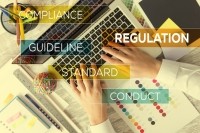
The challenge in developing the ASC feed standard has been around how to make it workable, he said.
There is no longer a great difference in terms of what the NGOs and industry perceive as necessary under the standard, but its implementation was proving the sticking point.
“It is about policing things in a practical way, so that a standard does not become a huge monster of bureaucracy that nobody will follow. It is about making it rigorous but workable.
“That has been the good thing about the discussions [we have had] with NGOs, [changing perceptions], and getting the real facts on the table about fisheries, about how the stocks are assessed.
“Of course, it is not only about what we do today but how we can improve over time. Sustainability [has to take account of] environmental, social and economic criteria. You can have a fantastic standard from an environmental point of view, but if it is not viable nobody will follow it and you will have achieved nothing.”
The future of farming
In terms of the future of farming and disease prevention, he said the salmon farming companies in Norway are so big and so wealthy that they can afford to invest in new lice control technologies that require a lot of money and a lot of risk.
Alsted sees recirculation aquaculture systems (RAS) taking off in markets where there is a demand for fresh fish but where you don't find the natural conditions for growing salmon, such as in the US and China.
Interactive production control systems will continue to be exploited, while a lot of the Big Data technology will be adapted and used in the fish farming sector as well, he added.
“I am sure new things will come but they won’t completely change the set up. Fish still need feed, they need nutrients; they need to grow, there will be health problems. There is no animal production system in the world, pig or poultry, that doesn’t have production related diseases and that will also be the case in salmon and other aquaculture species.”
There will be new raw materials coming forward, he said, such as novel proteins, but they will remain relatively niche. In terms of volumes, fish feed will likely continue to be based on crops like soy, rapeseed, wheat, and corn, he said.
However, he sees as the more sustainable route the idea of using materials based on soy or corn but produced for the purpose of aquaculture such as soy protein concentrate or corn gluten concentrate. “We will see more of that.”
So more tailor-made products and also enzymes will gain in importance, he said.
“I see that [customized trend] happening in terms of fishmeal as well. Fishmeal is a standard product. It has been on the shelves since the 1950s and it is still a brown powder. You can get it in slightly different varieties, of course, but I am sure that there will be [more emphasis] on the value of certain fishmeal components, [beyond amino acid content], in the future. Fish oil today is traded on the basis of its EPA and DHA components and I think the same will happen with fishmeal.”
Alsted will not completely disappear from the world of aquaculture. “I am certainly not looking for a new job, but I will be available for limited consultancy work.”
